Realizing Children’s Rights in Rwanda
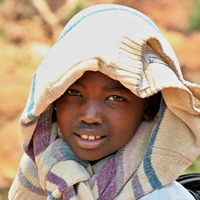
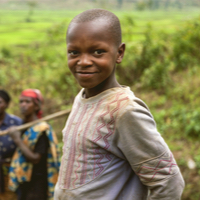
Rwanda has made significant strides in overcoming the legacy of its 1994 devastating genocide. Profound social, economic, and structural reforms have led the country to witness important economic growth, and major progress has been made in reducing poverty and delivering healthcare and educational services. However, despite this progress, Rwanda remains one of the world’s poorest countries where children continue to be vulnerable to chronic malnutrition, poor health conditions, violence, child labour and exploitation – all of which endanger their lives, development and well-being.

Children’s Rights Index: 6,56/10
Red level: Difficult situation
Population: 13 million
Pop. ages 0-14: 39%
Life expectancy: 69 years
Under-5 mortality rate: 34‰
Rwanda at a Glance
Rwanda is a small landlocked country in East Africa bordered by the Democratic Republic of Congo (DRC) to the west, Tanzania to the east, Uganda to the north, and Burundi to the south. Rwanda has one of the highest population densities in Africa with a young, mostly rural population, estimated at thirteen million (World Bank, 2020). Rwanda’s political, social, and economic reality is profoundly affected by the civil war in early 1990 and the genocide of 1994. Despite this, Rwanda has made significant progress towards economic prosperity and infrastructure development in the last two decades.
In efforts to realize its Vision 2020 Development Plan, Rwanda has implemented two five-year economic development and poverty reduction strategies (EDPRS I & EDPRS II). Additionally, political stability, strong governance, fiscal and administrative decentralization, and zero tolerance for corruption are key factors which have contributed to the country’s economic growth (Republic of Rwanda, 2012).
Children represent a large percentage of the Rwandan population, with 39% of the population being under the age of fifteen and a median age of 24,4. In addition, children make up 83.5% of Rwanda’s rural population, often living in precarious conditions and have limited access to fundamental needs such as nutrition, healthcare, education, and protection (World Bank, 2020).
Rwanda’s very young population is one of the consequences of the deeply devastating genocide that occurred in 1994, where about 1,000,000 Rwandans (United Nations, 2015) were killed within the span of four weeks. The unavoidable negative repercussions of the massacre, along with current development challenges, continue to affect the lives of Rwandese children in various ways (United Nations, 2015).
Notwithstanding the socio-economic achievements, Rwanda still faces several development challenges that directly impact the safeguarding of children including chronic malnutrition (stunting), early childhood development, neonatal mortality, poor quality education, and violence.
Status of children’s rights[1]
Rwanda has made strong legal commitments to the promotion and protection of the rights of children. Rwanda is signatory party to numerous international conventions, declarations and treaties on human rights, education, labour, disabilities and refugees that require the government to commit itself to ensuring the rights of children in the country.
On the international level, in 1990 Rwanda notably ratified the United Nations Convention on the Rights of the Child (UN CRC) followed by the Optional Protocol to the Convention on the Rights of the Child on the Sale of Children, Child Prostitution and Child Pornography and the Optional Protocol on the Involvement of Children in Armed Conflict, both ratified in 2002 (Sapsford, 2012).
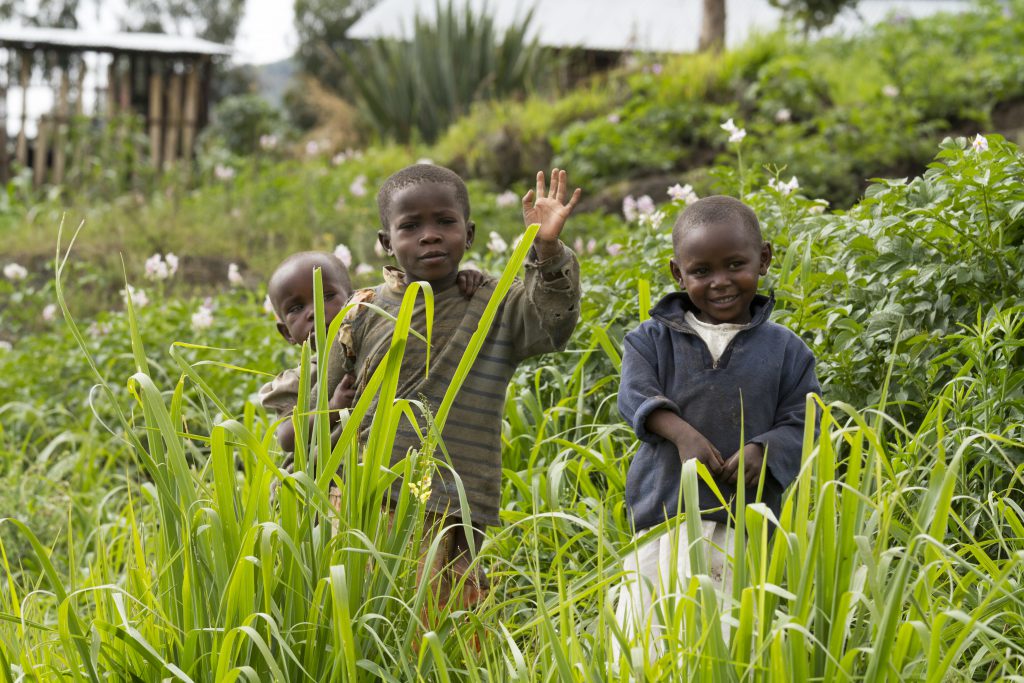
Other international treaties ratified by Rwanda include the Convention of the International Labour Organization concerning the Prohibition and Immediate Action for the Elimination of the Worst Forms of Child Labour, the Convention on Consent to Marriage, Minimum Age for Marriage and Registration of Marriages (2002), the Protocol to Prevent, Suppress and Punish Trafficking in Persons, Especially Women and Children, Supplementing the United Nations Convention against Transnational Organised Crime (2002) and the Convention 138 of the International Labour Organisation on Minimum Age of Employment 1973 (1981) (Sapsford, 2012).
On a regional level Rwanda is committed, in particular, to the African Charter on the Rights and Welfare of the Child (2001). However, not only has Rwanda ratified international and regional treaties, but it has also passed several national laws and policies aimed at protecting the rights and needs of children with special regard to the national context. Above all, the Constitution of the Republic of Rwanda (2003) as amended to date, reaffirms the adherence to the principles and commitments to the protection of children’s rights, specifically invoking the UN CRC (CRIN, 2015).
The National Integrated Child Rights Policy was designed in 2011 as an additional and comprehensive tool to coordinate the implementation of children’s rights and help create a basis for the multi-sectorial approach needed to implement the National Policy for Children and the National Strategic Plan for Children (Sapsford, 2012).
Moreover, in June 2012, Rwanda passed law Nº54/2000 relating to the Rights and the Protection of the Child. The purpose of the law was to establish a “Bill of Rights” for Children in Rwanda, creating a unified law covering all aspects of the rights of children and complying with all ratified international treaties (CRIN, 2015). The passing of this law included the creation of the National Commission for Children, a governmental organization to promote children’s rights.
Addressing the needs of children
Right to health
Since the end of the genocide, Rwanda has drastically increased its public spending on healthcare. The Government has made maternal and child health a priority in all development programs in line with the Millennium Development Goals (MDG). Besides the decentralization of health services, maternal and child health services have been created to put particular emphasis on maternal, neonatal and child health policies. The establishment of universal access to health insurance has enabled the access to health services by all (CRIN, 2015).
While both child and maternal mortality rates in Rwanda remain high by international standards, both have significantly decreased over the past decades. The under-five mortality rate of Rwanda fell gradually from 221.3 deaths per thousand live births in 1970 to 34 deaths per thousand live births in 2021 (Ministry of Health, Rwanda, 2020).
This reduction of child mortality can be seen as a direct result of government policies, including child immunization programs. During the past decade, the child immunization rate increased from 69.8% to 93%. The active promotion of breastfeeding for the first six month of a child’s life has furthermore helped reduce chronic malnutrition from 44% to 38 % (CRIN, 2015).
Despite the rising number of healthcare facilities across the country, children continue to face numerous health challenges and diseases. The most commonly identified causes of child death are pneumonia, birth asphyxia, and meningitis among neonates and malaria, acute respiratory infections, and HIV/AIDS-related death among non-neonates (Neil, 2018). Consequentially, the full enjoyment of Rwandan children’s right to health remains a serious concern.
Right to education
Rwanda’s educational system is considered to be one of the most progressive in Africa with free and mandatory access to primary and lower-secondary education up to the age of twelve. Close to 100% of Rwandan children are enrolled in primary school, and 73% of children aged fifteen or older are considered literate (CRIN, 2015). The government provides, in particular, school stipends, school feeding and cash transfer schemes for those children who, for economic, social or cultural reasons cannot afford school education (CRIN, 2015), (Unicef, 2018).
However, while almost all children enrol into primary school, only 71% of Rwandan children complete their primary education. The employment of children in labour activities outside school still continues to be a critical roadblock in regard to school attendance and completion (Unicef, 2018).
Overcrowded classrooms and low availability of school material have also resulted in degradation in the quality of education. Moreover, children with disabilities, as well as minorities and refugee children tend to face discrimination and serious impediments while accessing their right to education (CRIN, 2015).
Access to education is primordial in a developing country like Rwanda. School enrolment not only ensures and avoids child labour, but also develops the children’s knowledge and skills needed to impact society and contribute to its development.
Right to identity
In Rwanda, 91% of children are born in health facilities and, amongst these, only 50% are registered into the sector civil registry. As a result, the remaining children are unregistered and at risk of not being protected by the government. Birth registration is a fundamental right as it provides the child a name, parentage, nationality, and age. It also represents a proof of identity, a sign of existence in the eyes of society (Unicef, Rwanda – Birth Registration, 2017).
Without registration, and as a result, a birth certificate, children cannot enrol in social assistance programs or be admitted to school and be protected from child labour and early marriage, among other issues. Adults cannot apply for identification, which is required for employment and a driver’s license, or open a bank account and access credit to grow their business (CRIN, 2015).
Even today, Rwanda lacks a simple and inclusive registration procedure. The absence of decentralized and digitalized registration processes creates additional difficulties for parents who wish to register their child at birth. Article 12 of Law No 14/2008 penalizes those parents who fail to register their children within the required period of thirty days, thus creating additional legal barriers for child registrations beyond that time frame (CRIN, 2015), (World Vision, 2016).
Moreover, the legal requirement that the father is present during medical visits and most importantly during registration is an additional reason for unregistered children. A majority of children born to underage mothers are usually not registered. At the root of this issue lies the fact that many teen pregnancies are the result of sexual abuse, and as a result, do not meet the requirement of presence of the father during the first antenatal visit.
In addition, most teen mothers do not own an identity card during registration. Consequently, the mothers either register their babies under their parents’ names or do not register them at all. Single mothers often face stigmatization and fear the responsibility of not having the father legally recognized by the strict process (World Vision, 2016).
Right to food and water
Adequate nutrition and supply in water are critical to a child’s survival and health, directly affecting their well-being and physical and cognitive development. Poor nutrition of the mother can have negative effects on the baby in the womb, which can then extend into adulthood and carry over generations. Malnutrition or poor nutrition is still responsible for a great number of deaths in Rwanda but also impacts educational achievements, economic productivity and national development overall (USAID, 2018).
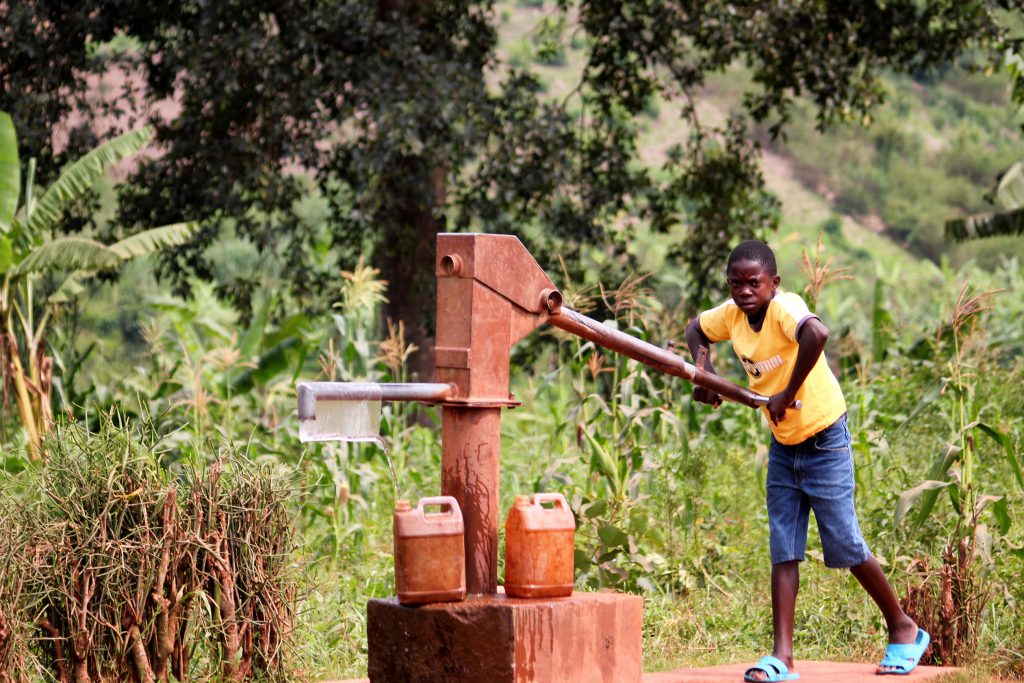
In addition to poor nutrition, children in Rwanda often face difficulties accessing water. Although great improvement has been made regarding access to water, issues of quality and availability remain, most importantly in rural areas. There is an evident disparity between different sections of the population that have access to sanitized water across the country, the poorest being the first affected. It is estimated that around 74% of the Rwandan population living in the poorest quintile do not have access to clean water in comparison to the 34% for the wealthiest quintile (USAID, 2018).
This disparity has a direct impact on children’s health, minimizing their access to decent hygiene, thus raising the likelihood of transmission of diseases caused by contaminated water, poor sanitation, and unsafe hygiene practices. In addition, women and girls in developing countries are most likely to be the ones burdened with the difficulty of accessing clean water. Their daily walk for clean water robs girls of their right to education (CRIN, 2015).
Right to protection
Rwandan laws guarantee all citizens equal treatment and protection against discrimination. However, despite the great progress the country has made to provide equality within ethnic minorities, some disparities remain.
Children born as a result of rape, children affected by HIV/AIDS, children with disabilities, young girls, children living in poverty, children in street situations, child-headed households, children in residential care, orphans, and children from ‘historically marginalized communities are at particular risk of discrimination in Rwanda (CRIN, 2015).
The Batwa community, representing 1% of the Rwandan population, for instance, still faces difficulties in accessing basic services. These impediments directly impact their right to health and education. As a result, their community sees a higher rate of infant mortality, diseases and malnutrition consequently suffering from a shorter average life expectancy. In addition, they have been directly impacted by the growth of the agricultural sector in the country, causing them to lose access to ancestral lands without any compensation. As a result, they live in conditions of great hardship, suffering from extreme poverty and social exclusion (UNPO, 2018).
The LGBTQ+ community has also been a target of discrimination. Although Rwanda remains one of the few African countries that has not criminalized homosexuality, there are deeply entrenched social stigmas towards individuals from this community which in turn often causes great hardship in the access and enjoyment of their right to health (CRIN, 2015).
Risk factors → Country-specific challenges
Poverty

In the framework of its “Vision 2020” objective to combat poverty, the Rwandan government initiated a comprehensive policy of privatization and liberalization with the goal of attaining rapid and sustainable economic growth, thus reducing the poverty rate in the country. The ultimate aim of these socio-economic reforms is to remodel the Rwandan economy, which is 90 % based on subsistence agriculture, and to transform it into a modern and diversified engine (UNPD, 2021).
Although Rwanda has experienced fast economic growth and has made tremendous progress in many sectors of social welfare, poverty remains widespread and pervasive. In 2020, 38.2% of the Rwandan population was living in poverty; and 16% in extreme poverty. As a result, 38% of children under the age of five are stunted, with 49% of them being in the poorest quintile (USAID, 2018).
Poverty has devastating impacts on children’s health, educational outcomes and cognitive development. Children born into poverty in Rwanda are more likely to experience health problems, including poor nutrition, chronic disease, a lack of access to water and to proper sanitation. Poverty is also a major driving factor for children being forced into child labour (World Bank, 2015).
Violence
Rwandan history has had and continues to have terrible consequences on children. Studies have shown that the legacies of the Rwandan genocide are transmitted, both directly and indirectly within family structures, parenting strategies and the family’s socio-economic situation (Center for International Criminal Justice, 2017).
Many of the country’s orphaned children are the tragic result of a violent civil war.
Those who survived have been exposed to atrocities to a degree that has never been seen before. These unexpressed traumas make them less sensitive as parents to the needs of their children who are now the victims of domestic violence themselves. Consequently, the vicious cycle of violence is perpetrated and passed on from generation to generation (Center for International Criminal Justice, 2017), (Nederlandse Organisatie voor Wetenschappelijk Onderzoek, 2017).
Recent studies have shown that children who have suffered violence are more likely to abuse other children. Around 60%of young people, especially girls themselves, believe that women should tolerate violence in order to keep their families together. As a direct consequence, five in ten girls and six in ten boys in Rwanda are victims of at least one form of violence – sexual, physical or emotional – before the age of eighteen. Children are most often abused by people part of their close environment: parents, neighbours, teachers or friends (Unicef, 2018).
Children subjected to violence can suffer severe short- to long-term health and social consequences. The direct result of violence by parents, caregivers and others has been associated with a number of emotional and behavioural problems in adolescence and adulthood, including aggression, conduct disorder, substance abuse, poor academic performance, anxiety, depression, reduced self-esteem and suicidal behaviour (WHO, 2017).
Child labour and trafficking
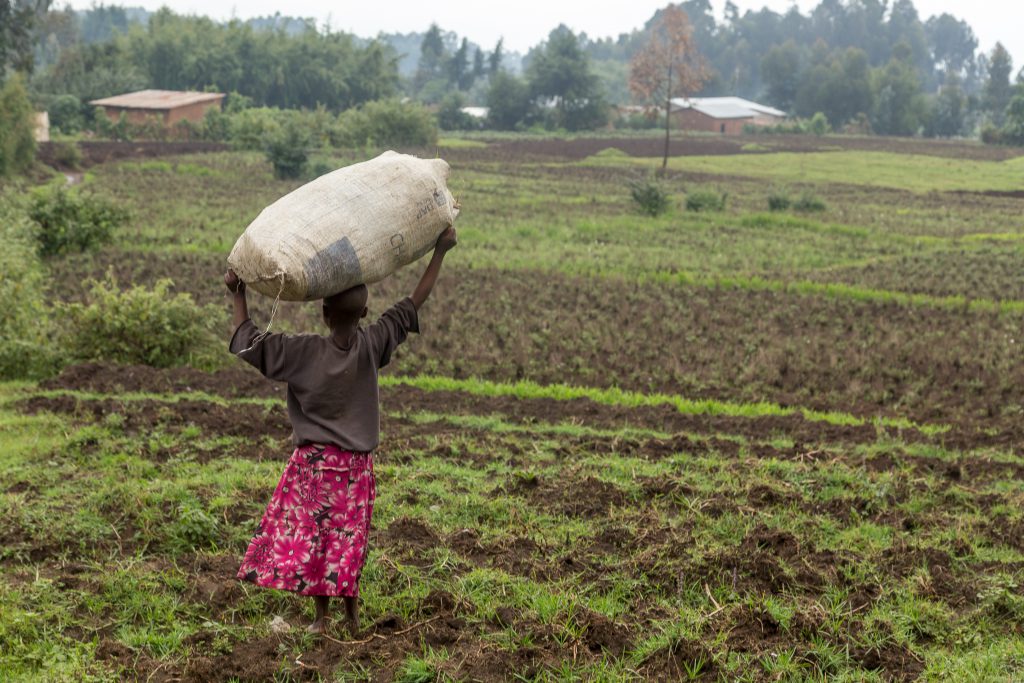
For the past years, Rwanda has become an important source, transit and/or destination country for individuals caught in forced labour and child trafficking. Rwandan girls are very often forced into labour, including domestic servitude and sexual trafficking. Similar situations occur for Rwandan boys, being subjected to forced labour in mining, agricultural and industrial sectors, but also service sectors abroad, including in China, India, Kenya, Kuwait, Saudi Arabia, Uganda, Zambia, and parts of East Asia (US-Department of Labor, 2020).
Traffickers tend, specifically , to target vulnerable groups, among which are youth experiencing homelessness, orphaned children, children with disabilities, young women and girls, and displaced children. Recently, observers reported an increase in child trafficking due to the economic impacts of the COVID-19 pandemic (US-Department of State, 2021). The government is yet to take more proactive measures in the prevention of child labour and trafficking, and especially, the search, apprehension, and conviction of traffickers, along with the provision of long-term care facilities for the victims.
Street children and detained children
An estimated 7,000 children live on the streets in Rwanda and may be runaways, homeless or work on the streets – with or without their families. They are particularly vulnerable, as their lives are characterized by insecurity, a lack of food, protection, healthcare access and education. Many suffer from malnutrition, diseases and are strikingly prone to fall prey to those who want to do them harm – thus subject to abuse, neglect and exploitation (Salesian Center, 2021).
In Kigali, Rwanda’s capital city, the Gikondo Transit Centre, has served as an unofficial detention centre where street children, but also homeless people, beggars and sex workers are arbitrarily detained (Human Rights Watch, 2020).
Since 2017, transit centres, like the Gikondo Transit Centre, are governed by the law establishing the “National Rehabilitation Service” and several subsequent government orders, which allows to hold anyone exhibiting “deviant behaviours” in transit centres for up to two months without any other legal justification or due process. In the transit centre, children are locked away in inhuman conditions, in overcrowded rooms, with poor hygiene and sanitation. Food, water and medical treatment are scarce and children frequently experience violence by the guardians and other detainees.
Given these violations of international instruments, such as the Convention on the Rights of the Child, international organizations, but also the Committee on the Rights of the Child, have asked the government of Rwanda to permanently stop the arbitrary detention of children in need of protection, to close down the transition centres and conduct thorough investigations into these abuses (Human Rights Watch, 2020). However, despite international pressure, the Gikondo Transit Centre and similar facilities are operating even today (CRIN, 2015).
Rwanda has gone a long way to promote and protect the rights of children. However, the road is still long and it is time the country chooses the path towards fully realizing the rights of every child.
Written by Anja Finke
Last updated on October 2, 2021
Bibliography:
Nederlandse Organisatie voor Wetenschappelijk Onderzoek., accessed on September 17, 2021.
Sapsford, P. A. (2012). Legal and Policy Framework for Children’s Rights in Rwanda. Kigali: Institute of Policy Analysis and Research, Rwanda.
[1] This article does not purport to provide a comprehensive or representative account of child rights in Rwanda; indeed, one of the many challenges is the lack of up-to-date information on children. This article is mostly based on sources from the United Nations that should be corroborated with resources from other organizations.

